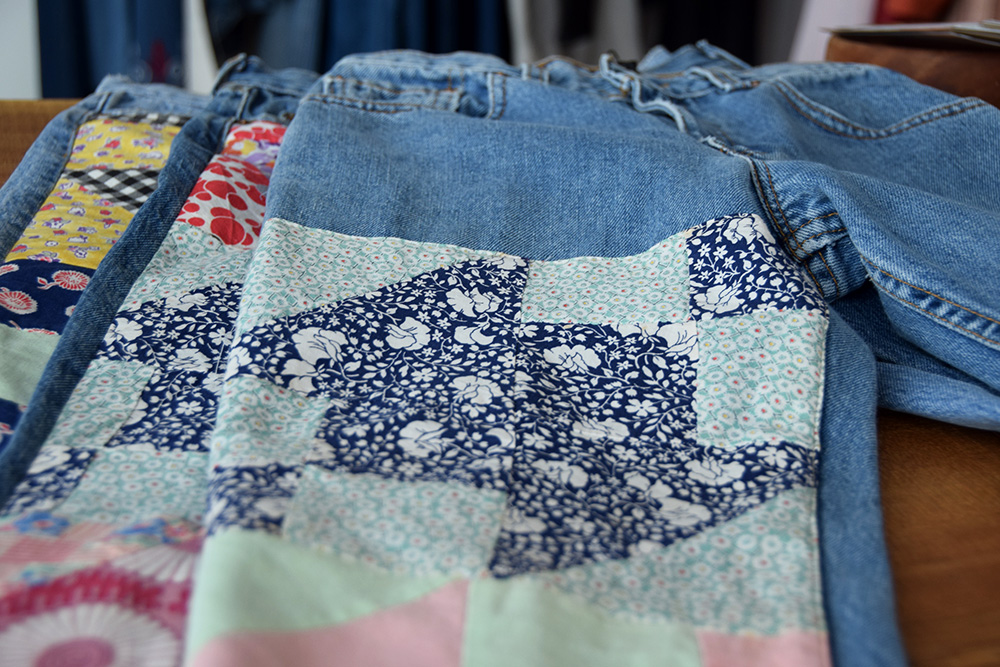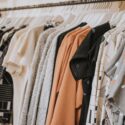Photos by Marissa DePino
Green is the new black. Sustainable fashion reigns in the Midwest. This doesn’t mean you can’t go green and wear black, but before setting out in search of your next garment, check beyond the price tag and read into the truth behind the label. One retail store called Preservation is keeping an eco-conscious mindset when curating its collection.
“The point of Preservation—obviously by the name you can probably tell—was to sort of bring [in] this curated collection of goods that were being made in a conscious way,” says Nicole Lorenson, the owner of Preservation.
Preservation is a vintage clothing store located in downtown Des Moines. It was created with the goal of bringing sustainable fashion to consumers through a capsule of clothing from mostly eco-friendly brands in mind. It builds on collections that are produced ethically, made in the USA, and organic in nature, though not all of those boxes are always checked at once.
“My thought was if I curated a collection of modern clothing, I sort of did the leg work for everybody,” Lorenson says. “I picked brands that are sustainable or making clothes in an ethical way or just being more conscious of the resources we are using.”
In creating her Preservation collection, Lorenson selects classic items from ethical designers and brands that showcase a modern style. Not only does Lorsensen work to bring ethical brands into the store, she also uses environmentally friendly packaging and totes. Preservation provides first-time customers with a reusable tote bag to use for their shopping. Lorenson also keeps paper bags on hand, made from 100 percent recycled paper.
“I picked brands that are sustainable or making clothes in an ethical way or just being more conscious of the resources we are using.”-Nicole Lorenson
Eco-Conscious Methods

Preservation isn’t the only brand focusing on eco-conscious practices. Larger companies are also developing sustainable solutions and finding innovative ways to waste less by recycling.
“A lot of companies—even mass merchandisers like Target—are using recycled polyester and what that is, is it’s made out of plastic bottles,” says Allison Leahy, a practitioner in residence at the fashion studies department at Columbia College in Chicago. “They basically take all these plastic bottles that are used and discarded, and break them up into small chips, and those small chips then get melted into eventually what would be made into polyester, because polyester is a man-made fiber.”
In utilizing resources such as plastic bottles, the industry is cutting down on its carbon footprint. Fashion can be a squandering process because the production methods use up natural resources like water and other materials needed to create a garment. According to ABC News, the process of dyeing textiles is responsible for 20 percent of industry water pollution, and the industry is ranked as the “second-most polluter of clean water.”
“When we make fabric, and we finish fabric, and we color fabric, when we go through the whole process from fabric, to yarn, to fabrication, it is a wasteful process…” Leahy says.
But the waste isn’t only from the process of designing and manufacturing the clothes. It stems from throwing away clothing as well. According to the Environmental Protection Agency (EPA), in 2014 textiles generated 16.22 million tons of material, but only recycled 2.62 million tons. However, the statistics are changing as more companies take the initiative to go green. One company is finding an alternative way to recycle denim before it hits the landfills.
“There are options of companies like Cotton Incorporated,” Leahy says. “[It] does a lot with denim that is recycled, then is used in the insulation of homes.”
Cotton Incorporated collects and recycles denim, which amounts to reusing approximately 600 tons of textiles. According to Leahy, some companies have also recycled materials to line the interiors of cars.
“Not only are you using materials and whatnot that are environmentally sound and repurposing and all that, but also making sure the workers are treat[ed] well.” -Katherine Bissell Cordova
Though there are innovative ideas for new materials and less wasteful fashion practices, the workers behind the sustainable process are often forgotten. Katherine Bissell Cordova, the Executive Director of Chicago Fair Trade, says the welfare of these workers should be included under the umbrella of sustainable fashion.
One factory collapse in Bangladesh resulted in brands such as Zara and H&M signing onto an agreement for safer working conditions.
Behind The Green Consumer
The fair treatment of workers is an important aspect of sustainable and ethically sourced clothing. But decisions on sourcing and sustainability aren’t just made by the designers. The process may begin with designers and companies, but the final say is left in the hands—or wallets—of the consumers.
“Most consumers will say they care about sustainability and ethical approaches and sustainable and ethical products. But, when it comes to their spending habits and buying habits they don’t always reflect that.” -Allison Leahy
“The thing that’s so great about it [fashion] is that it’s completely consumer driven…,” Cordova says. “I mean, if enough people say it, they listen. I mean, that’s the beauty of fair trade and ethical consumption.”
It is up to consumers to use their buying power to show their need for change. If companies see consumers buying more sustainable and ethically made clothes, then they will respond positively to buyers.
“Most consumers will say they care about sustainability and ethical approaches and sustainable and ethical products,” Leahy says. “But, when it comes to their spending habits and buying habits, they don’t always reflect that.”
As sustainable fashion continues to grow, there is the potential for consumers to grow with it.

